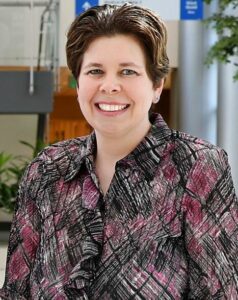An 8-year-old boy playing his first season of peewee football goes into cardiac arrest suddenly after practice.
A 10-year-old girl’s heart stops beating just as she takes her long-awaited turn down a water park slide.
A 14-year-old student sitting in math class falls to the floor unresponsive.
A 16-year-old high school basketball player collapses on the court after making the game-winning shot.
Although sudden cardiac arrest (SCA) is rare in children, it can affect anyone, even those who are physically fit. Each year, SCA claims the lives of over 2,000 children and adolescents in the U.S. and accounts for 3-5% of all deaths in children aged 5-19 years. It is also responsible for 10-15% of sudden unexpected infant deaths. These deaths leave behind a huge and devastating impact on families and communities. But there are ways to help identify risk factors that can help prevent these tragedies.
What is sudden cardiac arrest?
SCA occurs when the heart suddenly and unexpectedly stops beating. It is caused by the immediate loss of electrical heart function, usually from an irregular and rapid quivering of the ventricles (called ventricular fibrillation).
Rarely, the abnormal rhythms can resolve on their own. Usually, though, these rhythms degenerate to ventricular fibrillation (cardiac arrest in which the heart is quivering) or asystole (cardiac arrest in which the heart stops beating). Early emergency treatment with cardiopulmonary resuscitation (CPR) or an automated external defibrillator (AED) can help restart a stopped heart and allow the return of a normal heartbeat to help prevent sudden cardiac death (SCD).
Are there warning signs for sudden cardiac arrest before it happens?
When SCA happens to seemingly healthy young people, there is usually no obvious injury or medical reason the patient or family knew about. Some young people who suffer SCA may have previously experienced heart-related symptoms, such as shortness of breath, chest pain or fainting, that weren’t thought to be anything life-threatening. Others never had any symptoms of heart problems until the SCA event.
Symptoms of sudden cardiac arrest
Warning signs and symptoms exist in 30-50% of cases of SCA/SCD but are often ignored or misunderstood. If your child has any warning signs or symptoms of SCA, make an immediate appointment with your pediatrician or take your child to the ER if they appear distressed in any way.
Warning signs and symptoms may include:
- Exercise-related chest pain or discomfort
- Unexplained fainting (syncope) or near fainting, especially with or just after activity
- Repeated episodes of unexplained fainting (syncope)
- History of recurrent fainting or unusual seizures/seizure-like activity, especially with or just after activity
- Dizziness or lightheadedness
- Racing heart rate, palpitations
- Excessive fatigue or unexplained shortness of breath with exercise
- Recent viral infection with chest pain or change in exercise tolerance.
- History of a heart murmur whose cause has not been determined with certainty.
- History of high blood pressure
- Prior evaluation or treatment for a cardiac condition
- Restriction from activity because of a cardiac issue
In more than half of the cases of SCA in children, death was completely unexpected. Young people are often unaware of the risk factors and do not tell adults when they experience the symptoms. They may be frightened, embarrassed or simply unaware that what they are feeling indicates a potentially fatal problem.
Educating parents, children and teenagers about the symptoms and risk factors of SCA is one way to help prevent it.
When can sudden cardiac death happen to young people?
Sudden cardiac arrest is thought to be a leading cause of death in young athletes, but it also affects young people not involved in organized sports. It can happen during exercise or at rest, or even during sleep. In some cases, young people can die from sudden cardiac arrest days or weeks later from brain damage that happened during the SCA.
What causes sudden cardiac arrest in young people?
Not all causes of sudden cardiac arrest in children and young adults are known but may include:
- Hypertrophic cardiomyopathy. Usually inherited and often undiagnosed, this is the most common cardiovascular cause of SCA in young people. Muscle cells in the heart’s lower chambers, called ventricles, thicken. This can cause abnormal heart rhythm, especially during exercise.
- Coronary artery abnormalities. Defects in the way the coronary arteries connect to the heart can lead to decreased blood supply to the heart muscle during exercise and cause cardiac arrest. Young people with coronary artery abnormalities usually are born with them but may not notice any symptoms until they are older.
- Primary arrhythmias. In people with structurally normal hearts, sudden cardiac arrest can sometimes be caused by undiagnosed genetic conditions that affect the heart’s electrical impulses. These include Long QT syndrome, a heart rhythm condition that can cause fast and chaotic heart rhythm, and Wolff-Parkinson-White syndrome, an extra electrical pathway in the heart creates a detour that can make it pump extremely fast.
- Myocarditis. Usually triggered by an infection, myocarditis means the walls of the heart are inflamed. Most myocarditis cases in children happen when a virus such as an enterovirus gets into the heart. It can also be caused by bacterial, fungal or parasite infections, and allergic reactions to some medications.
- Marfan syndrome. This connective tissue disease can lead to tears in the heart’s aortic blood vessel. People born with this condition, who tend to be tall and have long arms, may not realize they have it.
- Commotio Cordis is caused by a blow to the chest directly over the heart at certain points in the heartbeat cycle. It can happen to kids with completely normal hearts. Commotio cordis is more common in sports with projective objects such as baseball, ice hockey and lacrosse.
Are there ways to help prevent sudden cardiac death?
There are steps families and communities can take to lower their risk of sudden cardiac death in young people:
- Regular well-child visits and sports physicals. All children need regular wellness visits with their doctor. These visits are a chance to get a complete physical exam and detailed health history to help identify risk factors that may contribute to SCA. Pre-participation exams also are important, even if a child is not involved in organized sports because gym class and recreational activities can―and should―involve plenty of exercise.
- Know Your Family History. Gather the heart health history of blood relatives (children, siblings, parents, aunts and uncles, nieces and nephews, grandparents, and cousins), and share it with your pediatrician. This can help guide questions during well-child check-ups and sports physicals.
- Community Life Support Training and Automated External Defibrillators. The American Academy of Pediatrics supports age-appropriate life-support training, including CPR, for students and school staff. It also encourages having Automated External Defibrillators (AEDs) near athletic and training facilities. In cases of sudden cardiac arrest, AEDs can quickly deliver an electrical shock to return the heart rhythm to normal.
Risk factors for sudden cardiac death that should prompt additional testing:
- Family history of unexpected or unexplained sudden death in an otherwise healthy family member under age 50
- A family member with an inherited heart muscle or electrical problem
- Chest pain during exercise
- An abnormal heart rate or rhythm with an unknown cause
- Fainting/passing out or seizure without warning or during exercise
- Being born with a congenital heart defect (including those surgically repaired)
Diagnosis of sudden cardiac arrest
If your general pediatrician suspects your child is at risk for SCA, they might refer you to a pediatric cardiologist, a doctor who specializes in heart problems in children.
A pediatric cardiologist will listen to your child’s heart and ask questions about the circumstances that led to the symptoms, your child’s medical history and the family’s medical history. The cardiologist will read an electrocardiogram (ECG or EKG), a record of the electrical activity of your child’s heart, to determine whether a heart problem may be causing your child’s symptoms.
Remember
Although sudden cardiac death in young people is not common, even one life lost is too many. Take steps that can help reduce the risk of these tragedies, such as scheduling regular well-child visits, sports physicals and encouraging CPR and AED training in your community.
More information on this topic can be found at www.heart.org, www.healthychildren.org, and https://www.aap.org/.
Should a situation arise in which your child needs to be admitted to a hospital, remember that Hendricks Regional Health’s dedicated pediatric unit is staffed 24/7 to care for children from birth to 18 years.
Learn more at hendricks.org/pediatrics.

Pediatric Hospitalist
Hendricks Regional Health




